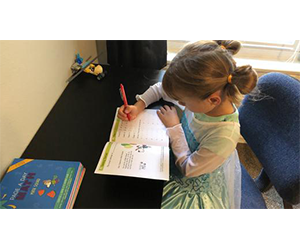
Why is Subtraction So Hard for Kids?
Make Subtraction Easier…By Adding!
Is your child doing well with their addition facts but struggling with subtraction? You are not alone. It is extremely common for students to learn addition easier than subtraction. Nearly every child struggling with subtraction that I have worked with has the same issue—they don’t know their addition facts well enough.
It might sound counterintuitive, but revisiting addition math facts is what will help your child get over their subtraction struggles. In this blog I’ll explain why knowing addition facts inside and out is critical to learning subtraction facts, and how addition facts help kids truly understand what they’re doing when they subtract.
What Is Subtraction?
What is subtraction, anyway? This might sound like a question with an obvious answer, but if you ask a child, you’ll get all kinds of answers. Subtraction means takeaway. Subtraction means minus. Subtraction means making less of something. These answers are all correct, but they don’t demonstrate an understanding of subtraction that kids need in order to be fluent in subtraction.
When you are solving for an equation like 7 – 3 = x, you are looking for the difference between 7 and 3. Another way it could be solved is by asking, “What number plus 3 equals 7?” Why does that work? Because subtraction is the inverse of addition.
Using Addition to Subtract
Does it really matter that subtraction is the inverse of addition? Or does that fall under the category of things you learn in school that have no use in the real world, like making dioramas and taking care of an egg baby? Please pay attention, because unlike whether you can climb a rope or play the recorder, this one matters a lot.
We’ve written before about math fluency and about how those with number sense do well in math partly because they can use numbers flexibly. For example, someone with number sense might forget what 6 x 9 equals, but they know that 6 x 10 = 60 and then if they subtract 6 that’s 54, so 6 x 9 = 54. People with number sense don’t get stuck when they don’t know an answer, because they usually can find another way to figure it out.
Having number sense and math fluency means you don’t just know answers, but you also understand how numbers and operations relate to each other. I’m a big proponent of kids learning addition facts first by themselves. Why? Because once they know these facts and understand them, they can use them while learning other operations.
Once kids know that 3 + 4 = 7 backwards and forwards, that’s a tool they can use when solving 7 – 3 = x. What is the difference between 3 and 7? What plus 3 equals 7? Using their knowledge this way is known as subtraction-as-addition reasoning, and it shows that a child is not just memorizing facts, but that they understand the relationships between numbers and operations. It shows that they are developing number sense.
Kids Need More Addition Practice
This brings me back to my original assertion—that most kids who are struggling with subtraction need more practice with their addition facts. Once your child knows their addition facts fluently and understands the connection between addition and subtraction, subtraction will become much easier for them.
If your child is having trouble seeing the connection between addition and subtraction, try using physical objects instead of written equations. I have 7 apples. That is the same as having 3 apples plus 4 apples. If I start with 7 apples and eat 3, I will only have 4 remaining.
Studies have shown that many students solve subtraction problems more efficiently when they use their addition skills. Research has also shown that students who understand the inverse relationship between addition and subtraction demonstrate better conceptual knowledge and do better at subtraction.
It’s understandable that you want to move on to the next operation, but kids need a lot of practice to truly gain math-fact fluency in addition. Encourage them to keep practicing until it becomes second nature. This will truly make subtraction so much easier moving forward.
Lots of students struggle with subtraction. In fact, lots of adults struggle with it as well. You and your child are not alone in this. If you find your child struggling with subtraction, I encourage you to go back to having them practice their addition facts. It can make all the difference!
To try a sample math book from one of our math kits, click here.
Try our complimentary flashcards, click here.
About the Author and Creator of Page A Day Math
 Janice Marks
Janice Marks
Janice began her career in education to pursue teaching pre-algebra at BASIS Tucson North, a charter school currently ranked as the sixth-best STEM school in the country by Newsweek. There she found joy in teaching math, working with parents, and inspiring children to believe in themselves and thrive. This experience, along with helping her own children succeed in math, led her to develop the Page A Day Math system.





